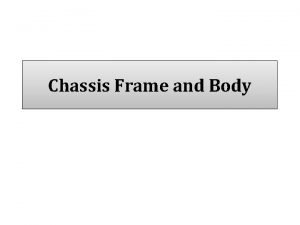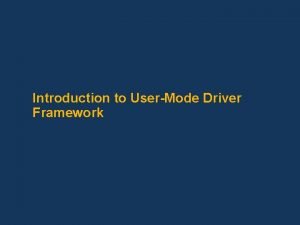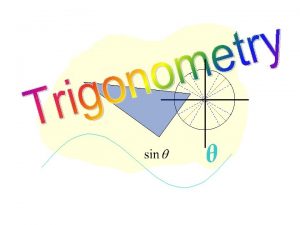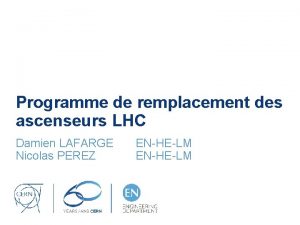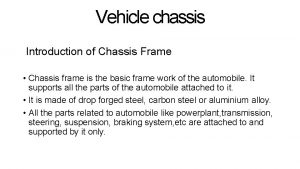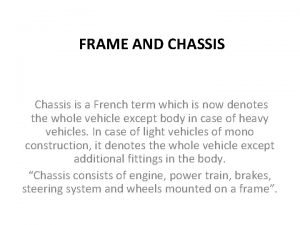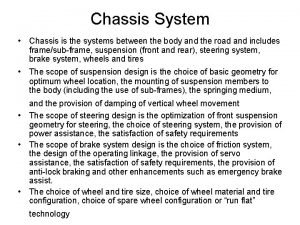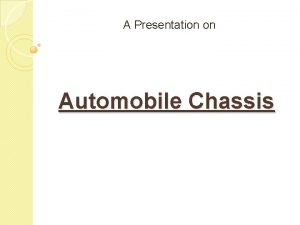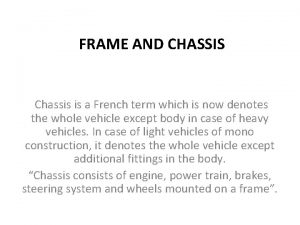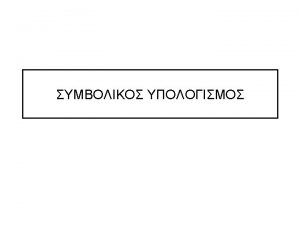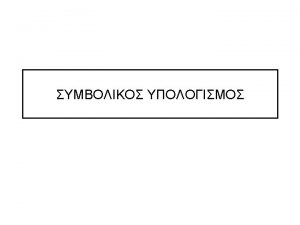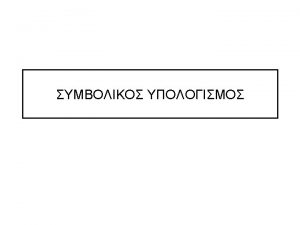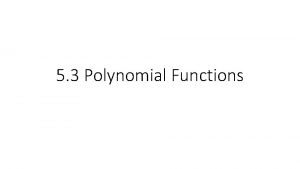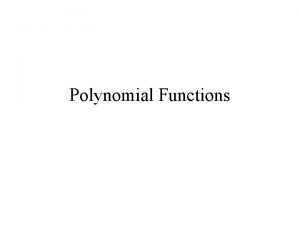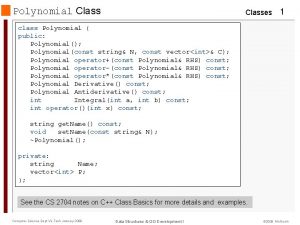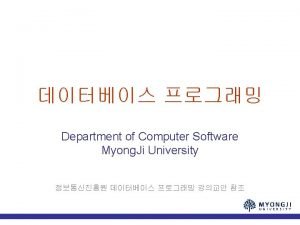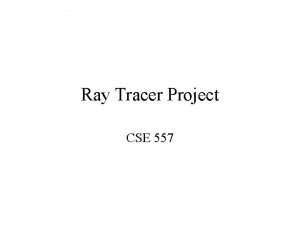Polynomial Chassis Driver Control RAY SUN DAMIEN HIGH


![Theory WHY MOTOR[] = VEXRT() IS INEFFICIENT Theory WHY MOTOR[] = VEXRT() IS INEFFICIENT](https://slidetodoc.com/presentation_image_h2/3a862add93e58746f92f73a78f914f90/image-3.jpg)























- Slides: 26

Polynomial Chassis Driver Control RAY SUN DAMIEN HIGH SCHOOL ROBOTICS VRC 6526 D MRS. MARICIC 2016

This presentation assumes basic knowledge of ROBOTC and driver-control programming. As an example for explication, a simple two-motor chassis will be used.
![Theory WHY MOTOR VEXRT IS INEFFICIENT Theory WHY MOTOR[] = VEXRT() IS INEFFICIENT](https://slidetodoc.com/presentation_image_h2/3a862add93e58746f92f73a78f914f90/image-3.jpg)
Theory WHY MOTOR[] = VEXRT() IS INEFFICIENT

The Problem of Precise Driving Normal chassis control code directly assigns the motors the value of the joystick. If both joysticks are pushed to maximum forward position (127), the Cortex makes the following substitution and the motors run at full speed in the positive direction.

The Problem of Precise Driving Suppose motor speed is represented by v and joystick input by j The expression motor[] = vex. RT[] is essentially v = j j must be limited to [-127, 127]. Thus, so is v.

The Problem of Precise Driving However, driving a robot precisely using low joystick values proves problematic. At small joystick values, the motor speed is too large. In other words, for low values of j, the corresponding v values (which are equal to j) are too large. How can we make the motor speed for small joystick assignments smaller?

Theory THE SOLUTION

Bad Solution : v = kj At first glance, adding a constant multiplier to the v relationship may seem a good ide ( v =j = kj ). However, this will lower the top speed of the motor, since a joystick value of 127 does not translate to a motor speed of 127. The graph shows v = 0. 5 j. Clearly the maximum motor speed is inadequate.

A Better Solution : Polynomials What if the relationship between v and Quadratic? j were non-linear? Suppose v = j ². As j , the joystick assignment, increases from zero to 127, v , the motor speed, increases slowly at first but then rapidly grows – producing the desired effect. Problem: v(127) does not equal 127 (rather, 127 ² or 16, 129). v(127) has to equal 127 to retain maximum speed. Solution: introduce a scaling constant k so that v(127) k(127)² = 127 =

A Better Solution : Polynomials In this example v = k(j)² , k should equal (1/127). However, there is still a major problem. What? (Look at the negative – j regions of the graph).

A Better Solution : Polynomials A negative joystick input should not result in a positive motor speed! The graph should be cubic in shape. There are two possible theoretical solutions: 1. Use an odd power of j so that the graph is cubic. However, higher powers situations in which speed limiting effect extremely pronounced. produce the lowis

A Better Solution : Polynomials 1. Alternatively, use two functions (piecewise). One function applies for positive values of j, and the other applies for negative values. This is the more versatile solution since any power can be used, rather than only odds v=

ROBOTC Implementation

ROBOTC Implementation ROBOTC handles exponents as such: Examples: What does each example mean?

ROBOTC Implementation

ROBOTC Implementation Example 2: Coding this relationship using if-statements to express the piecewise function necessary for even powers of j. The code reflects tank control programming. v=

ROBOTC Implementation This example may be refined with a return value function. These functions, when called, calculate a number and “return” that value to the Cortex, substituting it in place of the function declaration. For an integer return, the return function is declared and structured as such: int function. Name (int input. Variable) { int return. Variable; … (Do stuff to find “return. Variable” from “input. Variable”) return. Variable; }

ROBOTC Implementation Example 3:

ROBOTC Implementation Theory Revisited

ROBOTC Implementation Thus, in ROBOTC a constant integer may be utilized to store the power (n in the previous equation) for ease of modification. The combination of this variable technique and the return value function (Example 2) provides the greatest versatility for polynomial motor speed control.

ROBOTC Implementation Example 4 :

Conclusion

Sample Code The code snippets within this presentation were taken from “Polynomial Chassis Driver Control Examples” available on Damien Robotics websites or directly from Ray Sun. Pinout: “left. Motor” in motor port 2 “right. Motor” in motor port 3 Remember that vex. RT(Ch 3) is the value of the y-axis of the left joystick and vex. RT(Ch 2) is that of the right joystick.

Alternatives Of course, a polynomial relationship between motor speed and joystick input is not the only option. Piecewise lines, exponentials, etc. However, the polynomial perhaps necessitates the least amount of Cortex memory. Why does this matter? Isn’t the simple motor[] = vex. RT() relationship fine anyway? motor[] = vex. RT() works. However, the non-linear relationship facilitates more precise robot control. In VRC, with rather small scoring object goals, this may be crucial for programming precision.

Additional Applications The polynomial technique is applicable to other types of chassis and even any mechanism controlled by a joystick Example: Sample holonomic drive code utilizing the same return value function. “joy_Y”, “joy_X”, and “joy_R” are variables declared elsewhere that store joystick values.

END
 Conventional frame diagram
Conventional frame diagram Power control chassis material
Power control chassis material User-mode driver framework
User-mode driver framework Tan 30 unit circle
Tan 30 unit circle Ray model of light
Ray model of light Ray casting vs ray tracing
Ray casting vs ray tracing Numpy.polynomial.polynomial
Numpy.polynomial.polynomial How to divide a polynomial by another polynomial
How to divide a polynomial by another polynomial Damien ah yen
Damien ah yen Damien ringuenet
Damien ringuenet Fenetre anabolique
Fenetre anabolique Damien givry
Damien givry Damien darcy
Damien darcy Damien ettere
Damien ettere Nonacceding
Nonacceding Mother and child divided
Mother and child divided Away from the flock damien hirst
Away from the flock damien hirst Damien jolley
Damien jolley Lhc location
Lhc location Damien
Damien Marie louise damien
Marie louise damien Pauquet
Pauquet O que o ponto nos elementos da linguagem visual
O que o ponto nos elementos da linguagem visual Damien coleman
Damien coleman Damien kiernan
Damien kiernan Damien contandriopoulos
Damien contandriopoulos Damien charles weber
Damien charles weber
